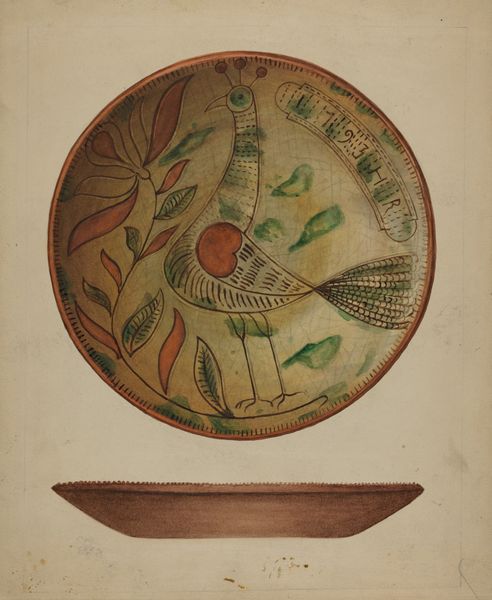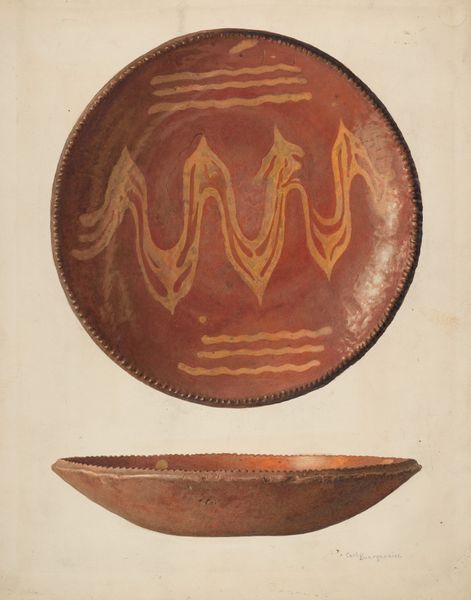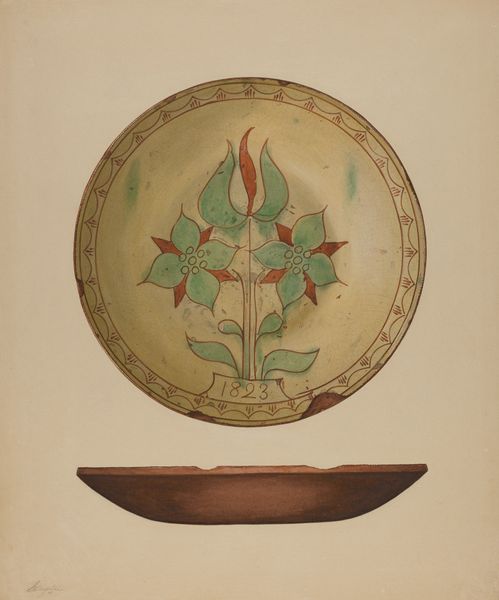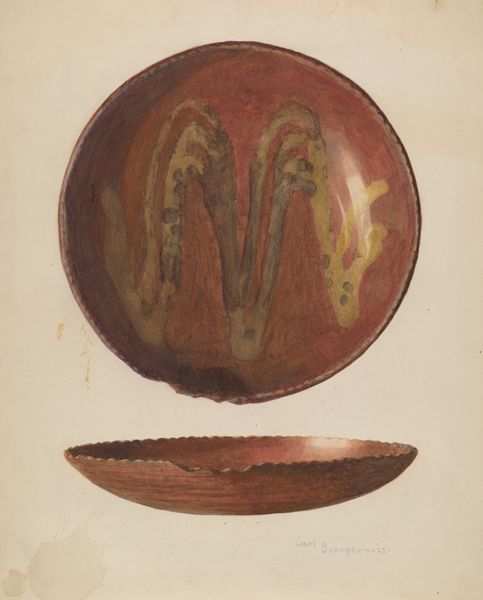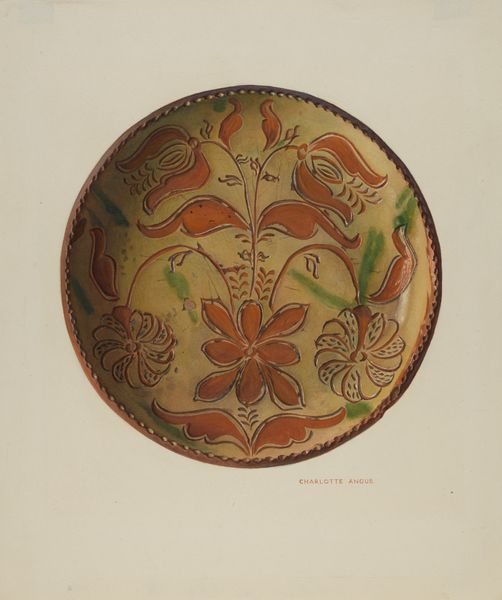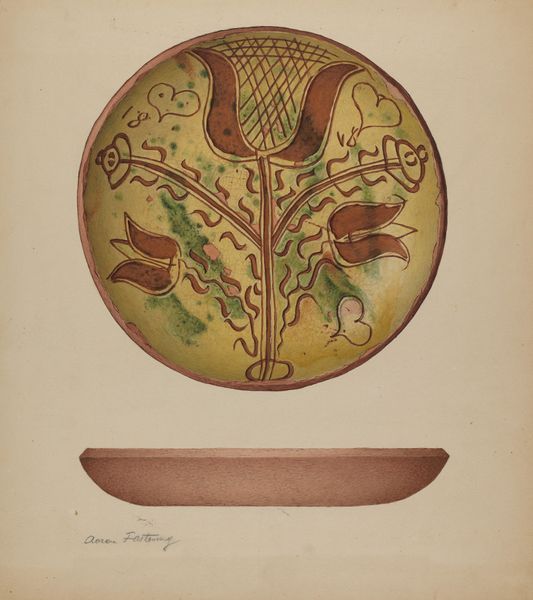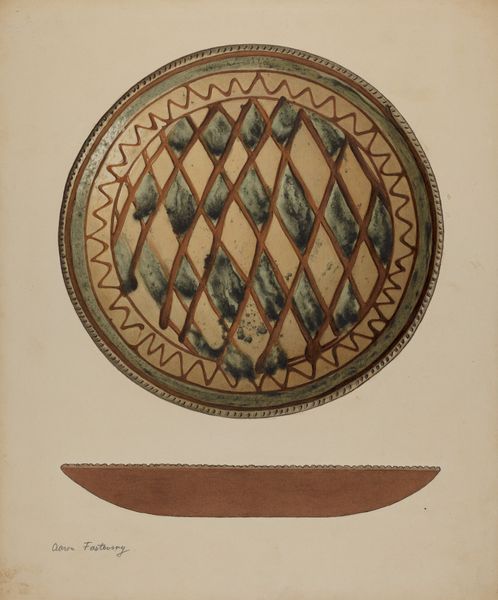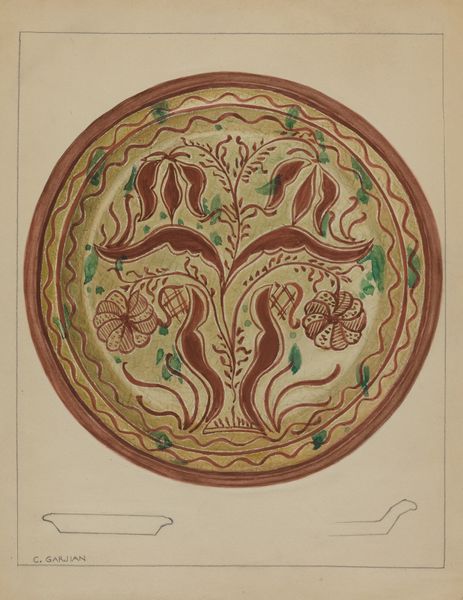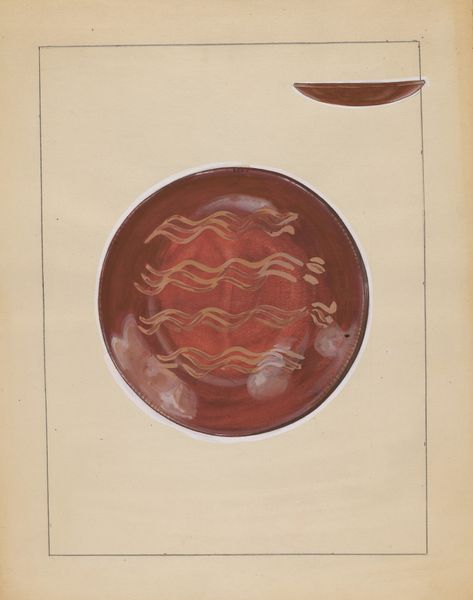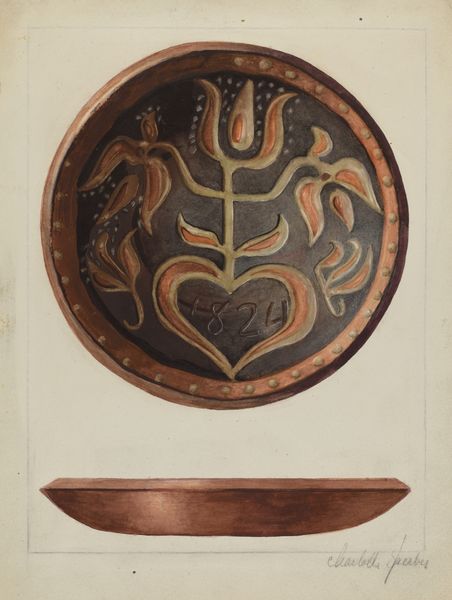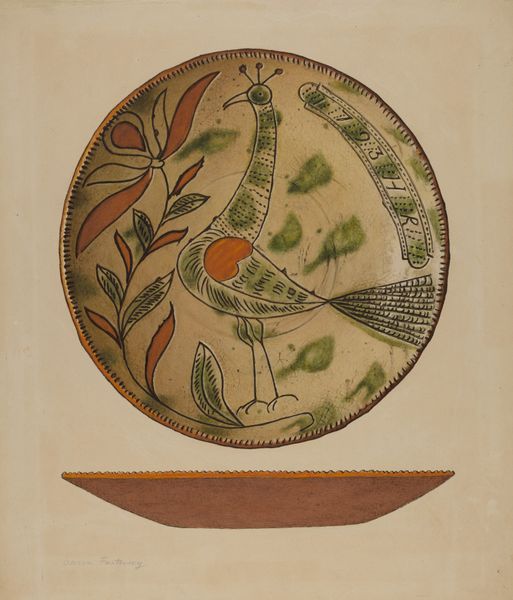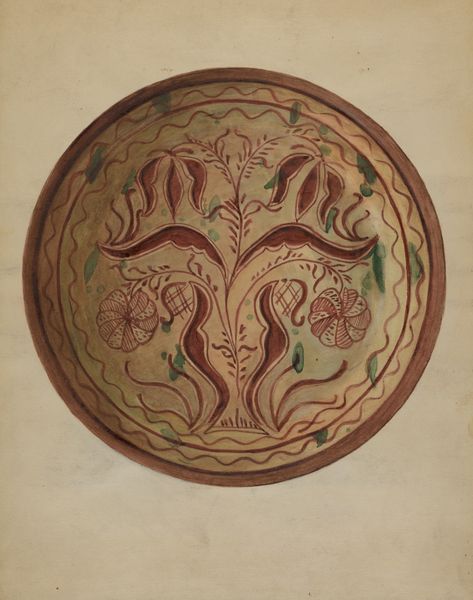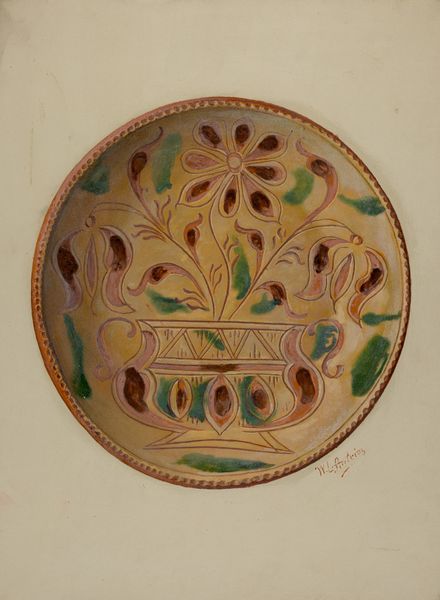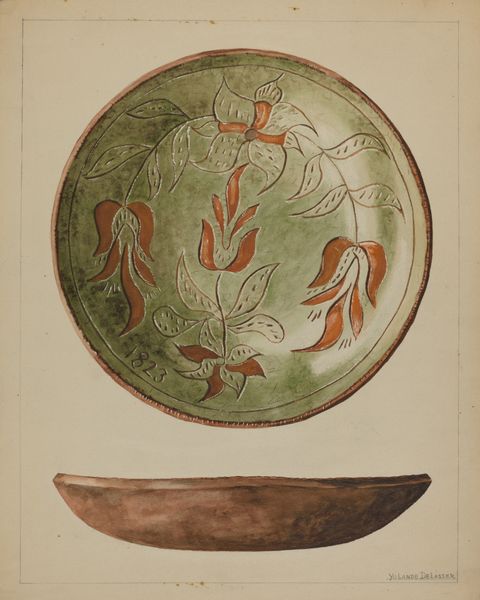
drawing, ceramic, watercolor, earthenware
#
drawing
#
decorative element
#
pottery
#
ceramic
#
watercolor
#
earthenware
#
folk-art
#
ceramic
#
earthenware
#
decorative-art
#
regionalism
Dimensions: overall: 45.6 x 32.7 cm (17 15/16 x 12 7/8 in.) Original IAD Object: 12" in diameter
Copyright: National Gallery of Art: CC0 1.0
Curator: Right now, we're looking at "Pa. German Scraffito Plate", crafted around 1941. It’s earthenware with watercolor and drawing elements. It seems simple enough at first glance. Editor: Simple? Maybe in its construction, but I see a world of cozy familiarity! It's like a memory made tangible, like a well-worn folk tale passed down. That ochre plate… it breathes warmth. Curator: Well, the "Scraffito" technique itself is quite fascinating. The term refers to the scratching through a layer of slip to reveal the contrasting clay beneath, so the image emerges from the careful removal of material. Editor: It’s so earthy, so directly connected to the physical act of making! I can almost feel the hand that carved those tulip-like forms. Do you think of them as flowers, though? They're almost flame-like…a comforting hearth. Curator: The designs, you see, were common in Pennsylvania German folk art – tulips representing faith, hearts for love, often combined with dates or names. It speaks to a particular regional culture, how artistic expression intersects with the daily life of the community. This decorative element could even reflect economic conditions. Editor: Absolutely! It's that human touch, the visible labor that gets me! You see the individual artist right there, in those slightly wobbly lines. Almost like it’s whispering, "I was made by someone." Curator: And think about earthenware—the materials were easily available. A direct contrast to industrially produced items. These objects held significance through their utility and through this individualized artistic interpretation. Editor: You’re right, this artwork becomes an intimate dialogue, it reflects the person’s emotions and life. Like the colors almost scream “earth!” And I find myself thinking, it makes you long for stories woven in and around that plate...What were meals served there? Who admired its patterns across the kitchen? Curator: I agree! It makes you reconsider everyday objects and their historical weight, which gets transferred during processes such as production. Editor: It is a quiet meditation! Thanks for digging up details I wouldn't see! Curator: And thank you, as your reflections helped emphasize art that might initially come across as “plain” isn't.
Comments
No comments
Be the first to comment and join the conversation on the ultimate creative platform.
